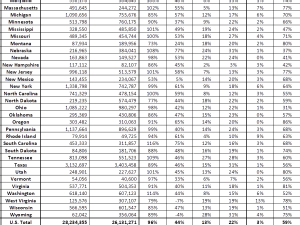After Russian officials bemoaned the collapse of migrant labor in the coronavirus pandemic, the head of the country’s prison service offered a solution: reviving the Soviet-era practice of putting convicts to work. Just don’t call it a Gulag.
An association with one of the darkest chapters of the Communist past hasn’t deterred top bureaucrats, who’ve taken up the idea with enthusiasm. Deputy Prime Minister Marat Khusnullin recalled he once worked with prisoners at a brickmaking factory as he told an RBC news interviewer Friday that he’s in talks on using convicts at construction sites, a plan also endorsed by Industry Minister Denis Manturov.
“This won’t be a Gulag, it will be completely new and decent conditions” for the prisoners involved, Alexander Kalashnikov, head of the Federal Penitentiary Service, told human rights officials last month, the state-run RIA Novosti news service reported. Nearly 190,000 of Russia’s 483,000 prisoners would be eligible, though participation should be voluntary, he said.
The word Gulag evokes the history of the Soviet labor camps, in which as many as 1.7 million died among millions of prisoners and “enemies of the state” compelled to work in mining, forestry and road and railway construction, reaching its peak during Josef Stalin’s rule.
Construction companies are among those hit hardest by labor shortages caused by the decline in migrant workers, mostly from central Asia, that’s pushing up wages and project costs. Amid tighter border controls in the pandemic, Russia is considering vaccinating migrant laborers to draw more into its economy.
Vacancies in Russia’s construction sector in April soared 83% compared to the same month in 2019, before the pandemic hit last year, according to hiring site SuperJob. Salaries on offer have increased by 15% since last May.
While convict labor is employed in many other countries, including in the U.S. where prisoners work on tasks from shoveling snow to firefighting, the scale and immense brutality of the Soviet experience was immortalized in Alexander Solzhenitsyn’s “The Gulag Archipelago.”
Still, Kalashnikov’s proposal prompted one state news service columnist to muse that the Gulag hadn’t been so bad because it offered hundreds of thousands of prisoners a chance for social advancement by gaining a skill while receiving food and shelter.
‘Forced Labor’
“If this happens, I have no doubt it will be badly-paid forced labor,” said Svetlana Gannushkina, a founder of the Memorial human rights group who also campaigns for immigrant rights. Memorial has spent decades recording the horrors of the Gulag.
Authorities plan to use prisoners to help speed work on a $10 billion project to modernize and expand railroads to Russia’s Far Eastern ports. Construction of the original Baikal-Amur-Mainline, or BAM, involved hundreds of thousands of Gulag prisoners, many of whom died in the process.
Prisoners at 117 correctional centers already work in companies and get paid, though the system needs close monitoring to prevent abuses, said Eva Merkacheva, a member of the prison service’s Public Council.
Kalashnikov’s proposal to make convicts much more widely available to businesses may have public support in a country that’s often ambivalent about migration from former Soviet republics.
A poll published June 1 by state-run VTsIOM found that 71% of Russians support the idea of replacing migrant laborers with prisoners.










